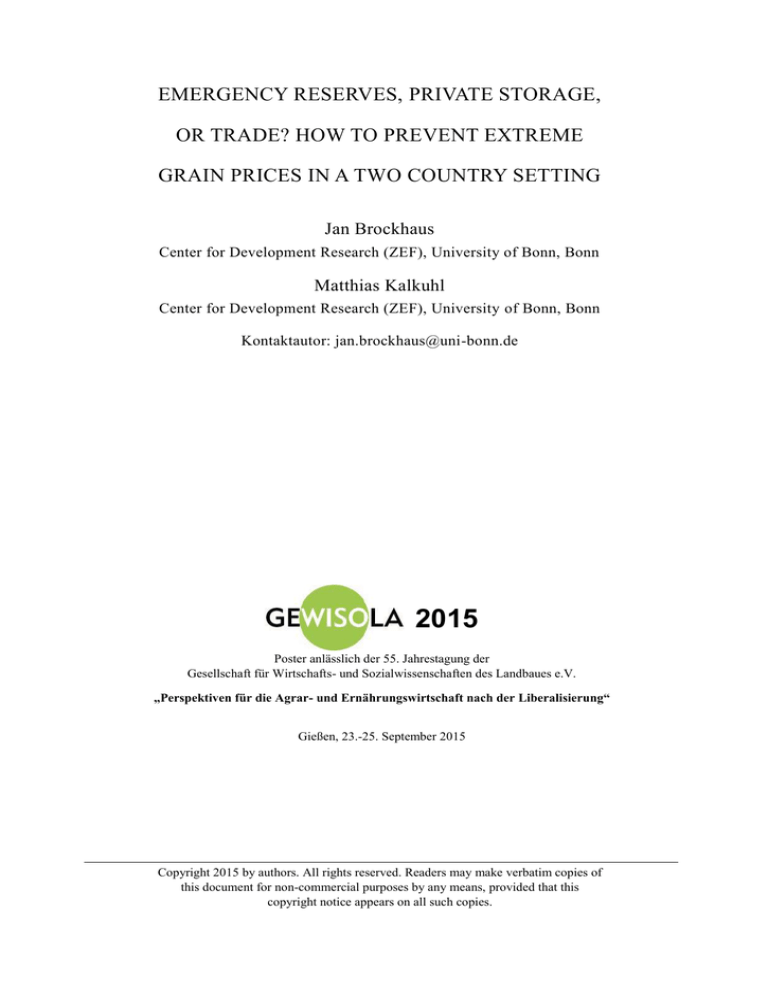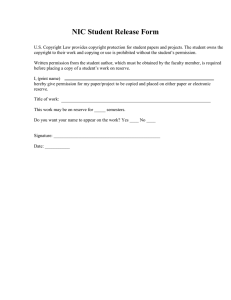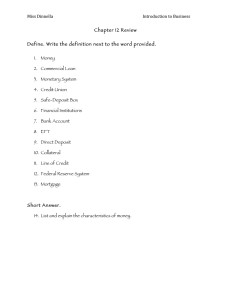
EMERGENCY RESERVES, PRIVATE STORAGE,
OR TRADE? HOW TO PREVENT EXTREME
GRAIN PRICES IN A TWO COUNTRY SETTING
Jan Brockhaus
Center for Development Research (ZEF), University of Bonn, Bonn
Matthias Kalkuhl
Center for Development Research (ZEF), University of Bonn, Bonn
Kontaktautor: jan.brockhaus@uni-bonn.de
2015
Poster anlässlich der 55. Jahrestagung der
Gesellschaft für Wirtschafts- und Sozialwissenschaften des Landbaues e.V.
„Perspektiven für die Agrar- und Ernährungswirtschaft nach der Liberalisierung“
Gießen, 23.-25. September 2015
Copyright 2015 by authors. All rights reserved. Readers may make verbatim copies of
this document for non-commercial purposes by any means, provided that this
copyright notice appears on all such copies.
Emergency reserves, private storage, or trade? How to prevent
extreme grain prices in a two country setting
Extended abstract
Introduction
High and volatile food prices are a major concern for governments in developing countries as they
have serious impacts on the poor. Therefore, many developing countries actively use trade and
storage policies to stabilize local prices and keep them at a low level. When food prices have spiked
in the 2007-2008 world food crisis, many countries including Argentina, Ethiopia, and India restricted
exports in order to prevent local prices from increasing to global price levels (Headey, 2010). Overall,
the 2007-2008 food crisis has put the questions of how to compensate supply shortages again very
high on the international agenda. Typical proposals range from maintaining a public reserve,
increasing market transparency, boosting production, facilitating trade, subsidizing private storage to
shaping demand through policies (e.g. on biofuel quotas and financialization).
Method
This paper presents a theoretical two country model which is used to evaluate a broad set of trade,
private storage, and public reserve related policies. Contrary to existing works, this paper analyzes
not only the impact on price volatility but also the occurrence and severity of extreme price events
which are a very relevant political concern. Furthermore, gains from cooperation between two
countries versus losses from non-cooperation are quantified. In the yearly model, private
stockholders, producers, and traders are profit maximizing, risk-neutral and have rational
expectations. Demand is isoelastic and consumers do not self-insurance, i.e. not save over different
time periods. The government in each of the two countries can intervene by shaping trade policies,
paying a private storage subsidy or maintaining a public emergency reserve. The reserve is defined by
two parameters, its capacity and a trigger price. If prices are below the trigger price, the reserve is
filled up to its capacity while stocks are released to prevent any price increase above the trigger
price. All actors have full information about the current state and future expectations, act
competitively, and anticipate each other’s behavior. Based on preferences about costs and risks, the
government can define the capacity of the reserve as well as the trigger price, the private storage
subsidy, or the trade policies. For all interventions, the fiscal costs are calculated and the
effectiveness of the different policies is compared using different measures such as the expected
price volatility or the likelihood of extreme prices. The model is solved in MATLAB using the RECS
solver (Gouel, 2013) and the CompEcon Toolbox (Fackler & Miranda, 2011).
Results
Unsurprisingly, free trade turned out to be a highly efficient and free of costs way to compensate
harvest failures. Limiting trade increases the likelihood of extreme price events as well as the
expected price volatility. A private storage subsidy may be an additional tool to stabilize prices but
while it is very efficient in reducing the standard deviation of prices, it is likely to fail at compensating
extreme events, i.e. massive supply shortages. Such shortages are a result of production, private
stocks, and imports combined being significantly below the sum of their expected values.
A public reserve following very simple rules – storing up to some capacity limit if prices are below a
trigger price while releasing if they are above – turns out to be a much more efficient way to reduce
the highest percentiles of prices and therefore help in extreme events. Such a reserve can be set up
in a way that it hardly affects private storage and only produces minimal fiscal costs. Already for
0.08% of the agricultural GDP, a decent level of insurance against extreme events can be reached.
Another consideration for a policy maker is that a private storage subsidy may heavily impact trade
while a reserve hardly does. While it could be useful to limit the need for trade if infrastructure is
bad, it also implies that in case of large supply shortfalls there may be fewer companies ready to start
importing. However, any such measures are much less helpful if the policies of the countries are not
aligned. If trade is not limited and only one country has a reserve, the benefits of this reserve will
leak into the other country while the costs do not. Both countries would then benefit from the
insurance mechanism which is maintained and paid for by one country only. Thus, an international
free-rider problem is created. Nevertheless, if for logistical or other reasons the maintenance of a
reserve is easier in one country, the other could pay a compensation as both countries are almost
equally protected from supply shortages, no matter where the reserve is based. If only one country
builds up a reserve and wants to protect itself from paying the costs to stabilize prices in other
country, a trade policy based on whether the reserve is touched is a better option than introducing
time-independent quotas. The reasons is that limiting the per-period amount of trade seems to have
a more devastating impact on the price stability than limiting trade to periods where the reserve
remains untouched.
Overall, policy makers looking for stabilization mechanisms may consider either option, a private
storage subsidy or an emergency reserve, as well as a combination thereof. Meanwhile, they should
clearly opt for free trade as long as their policies are in line with those of their trading partners.
References
Fackler, P., & Miranda, M. (2011). CompEcon. Retrieved from
http://www4.ncsu.edu/~pfackler/compecon/toolbox.html
Gouel, C. (2013). RECS toolbox. Retrieved from http://www.recs-solver.org/
Headey, D. D. (2010). Rethinking the Global Food Crisis, The Role of Trade Shocks. IFPRI Discussion
Paper, 00958.






